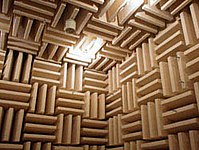
Photo from wikipedia
Abstract This work investigates the dynamic behaviour of a multi-storey frame building, assumed as the structure to be controlled, connected with an adjacent support structure by means of horizontal fluid… Click to show full abstract
Abstract This work investigates the dynamic behaviour of a multi-storey frame building, assumed as the structure to be controlled, connected with an adjacent support structure by means of horizontal fluid viscous dampers. The dampers connection system has two main effects: (i) energy dissipation provided by the viscous dissipative forces, (ii) energy transfer between modes leading to modes coupling effects between the two buildings without a significant dissipation of energy. The relative contribution of the two effects is highly dependent on the main properties of the coupled system. To investigate this complex behaviour, first the minimal coupled dynamic system composed by two Single-Degree-Of-Freedom systems connected by a viscous damper is analysed. The theory of complex damping is used to determine complex frequencies and damping ratios, while analytical expressions of steady state response under harmonic excitation are determined to investigate the influence of the system parameters on the maximum dynamic amplifications. The seismic response is also investigated through a wide parametric study with the aim of evaluating the trends of the damping reduction factors with respect to the main dynamic parameters of the coupled system. Minimum values of the damping reduction factors and corresponding optimal damping coefficients are determined. Then, the analyses are extended to uniform multi-storey structures for which minimum damping reduction factors are provided for a wide range of the key system parameters. Comparisons between one-storey and uniform multi-storey systems are provided. The results can be useful for a preliminary design of the dampers connection system and for the evaluation of its effectiveness based on the fundamental dynamic properties of the connected buildings.
Journal Title: Soil Dynamics and Earthquake Engineering
Year Published: 2020
Link to full text (if available)
Share on Social Media: Sign Up to like & get
recommendations!